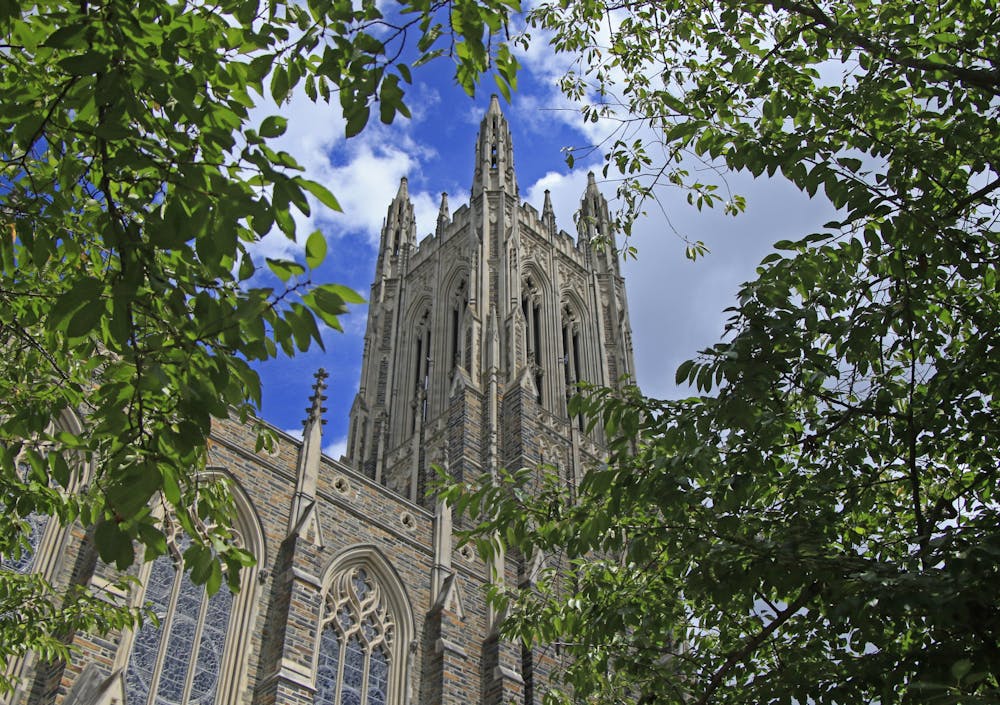For many not involved in Duke Student Government, the existence of a cabinet may be a surprise — and even for those who are aware of the cabinet, its purpose tends to be elusive.
DSG comprises three branches: executive, legislative and judiciary. Although the leader of the Cabinet — the Cabinet chair — is part of the executive branch, the Cabinet works and votes alongside the Senate committees.
According to the DSG constitution, the Cabinet officers “advise the President and Executive Vice President and carry out duties as prescribed by the President or Executive Vice President, By-Law, or Senate statute.”
But what exactly does the DSG Cabinet do?
Who makes up the Cabinet?
Amber Miranda, a junior, is the current Cabinet chair and former director of racial and multicultural diversity and outreach.
Former Cabinet Operations Leader Katie Kotler, a sophomore, described the goal of the Cabinet as representing specific groups on campus and voicing their needs and wishes to the administration and the rest of DSG.
The Cabinet is made up of 10 directors: a director of gender equity and violence prevention, a director of environmental affairs and policy, co-directors of disability rights and advocacy, co-directors of international policy and outreach, a director of first generation and limited income, a director of LGBTQIA+ affairs and policy, a director of varsity student athlete affairs, co-directors of racial and multicultural diversity and outreach and a director of religious outreach and affairs. The other roles that make up the Cabinet include chief of staff, Cabinet operations leader and Cabinet directors.
Cabinet directors are nominated by their student groups and then confirmed by the Senate. The directors are led by the Cabinet chair.
What does the Cabinet do?
These Cabinet officers have similar powers to DSG senators. They have voting rights in the Senate and can enact legislation that concerns policies that affect students. They also have the ability to allocate funds received by DSG, issue resolutions that express the opinions of the Senate, establish committees via statute and confirm all presidential nominations.
However, they can focus their work entirely on specific groups of students on campus — what Kotler refers to as a “specific duty” to these groups. Having a connection to DSG allows the members of the Cabinet to use the leverage that DSG holds to help create change.
Miranda emphasized the importance of building relationships with these student groups.
“The most important thing is to have relationships with all of these different student groups, especially the underrepresented or younger groups that don’t have support or funding. It’s so easy to feel disconnected from DSG,” Miranda said.
“Sometimes, within committees, we may miss [things], especially when we're focused on the student body as a whole,” Kotler said.
What are some examples of the Cabinet’s work?
A major part of the role of the Cabinet director is collaborating with student groups.
“If a student group feels like they would like support in a certain area, then they can feel free to reach out to directors for whatever they would need,” Miranda said. “The directors are also reaching out; it is a mutual and continuous relationship.”
The directors also work together on projects, as many issues are intersectional ones that affect multiple student groups on campus.
Miranda said many Cabinet projects in the last year were focused on finding space for groups on campus, especially within the Bryan Center. Miranda and the other co-director of racial and multicultural diversity and outreach also created a spreadsheet of all cultural groups on campus, compiled their contact information and reached out to establish connections with these groups.
Another group of directors worked within finances and tried to get the Cultural Endowment Fund, a fund used by cultural and identity groups to support their events, up and running again. The co-director of international policy and outreach also wrote an international Blue Book, which will be published soon on Student Affairs.
The Cabinet also has been trying to institute inclusive training as part of onboarding for Duke’s faculty.
“As far as I know, faculty aren't required to do any kind of training when they are onboarded to the university, so we are trying to institutionalize trainings so that teachers are aware of students with disabilities in the classroom or LGBTQIA trainings to help everyone feel safe,” Miranda said.
Another project done by the Cabinet last year was establishing an LGBTQIA+ Living and Learning Community in Craven.
As Cabinet chair, Miranda hopes to really focus on not trying to burden these student groups.
“We want to be there as a resource so that they know that if they need help, we can try to assist them in the best way we can — and really listen.”
What is the difference between the Cabinet and Senate?
At the height of the COVID-19 pandemic, the Cabinet was inactive. This has been the first year that it is back, and with the lack of previous structure and expectations, the Cabinet has been given significant freedom in their roles.
One change this year has been that the directors have been given a vote in the Senate and attend the weekly Senate meetings.
However, the Cabinet still sets itself apart from Senate committees. The directors take on projects similar to the way Senate committees do, but they are focused specifically on the needs of their groups.
“The Senate works on a lot of short term projects that see results within a year, while the Cabinet is given a lot more freedom to step back and look at the bigger picture and see long term,” Miranda said.
Get The Chronicle straight to your inbox
Signup for our weekly newsletter. Cancel at any time.

